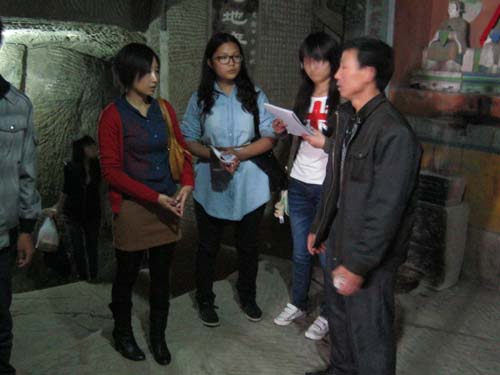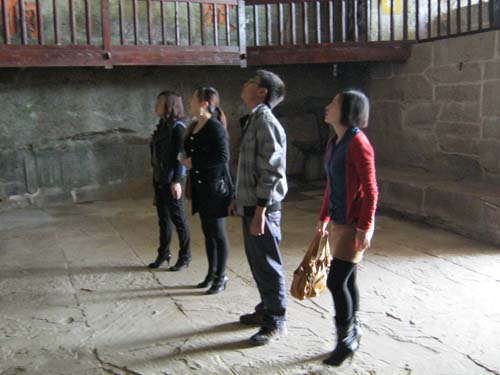The administrator said that Jia had been gifted and diligent since his childhood. Although he looked by all ways for famous teachers in Chengdu and learned from them, he seemed not to make any achievement in imperial examinations for the possible reasons that he had no interest in fame or he failed the exam or other such reasons. Jia Ruzhen once ran a theatrical troupe and did some business. Thanks to his success in business, he had enough money to run a school, and he was honored as “Kind Jia” for his generousness. Jia’s mother died when he was in his middle age, so he closed his career in business and returned home.
 |
| Listening to the administrator in an interview |
For the ancients, the greatest good they could do was repairing bridges and roads and running free-schools, and the latter was regarded as the great state of pursuing morality that was more meaningful than pursuing merits. After returning home, Jia decided to devote himself to charity through running free schools. At the beginning, he established his school in the nearby cave cut by Kou Zishun.
 |
| Listening to the administrator in an interview |
The first thing Jia did was to expand the cave after he decided to set up the school there. Although the cave was in an acceptable size with a spring as water source, it was somewhat small for an school. Therefore, Jia cut another 300m2 of caves during his 40 years of running schools, and expanded the school to the current scale. The Scripture Crag for Happiness we see today is divided into four layers with rock roads and wooden ladders between them. The whole cave is divided into seven rooms with a total area of 470m2, some were used as teaching halls and living rooms, some as kitchen and storage rooms, and others as students’ bedrooms. The small holes in stonewalls were for oil lamps and books. Most peculiarly, of all the scattered holes we can see halfway up the mountain, most of them are windows for lighting and ventilation except the lowest one for the entrance led by stone steps.
|

